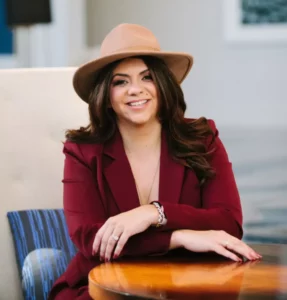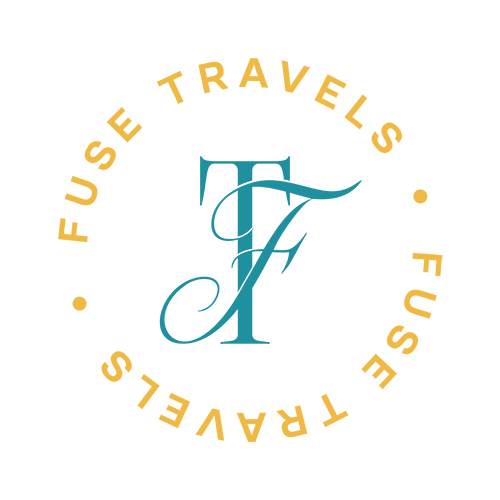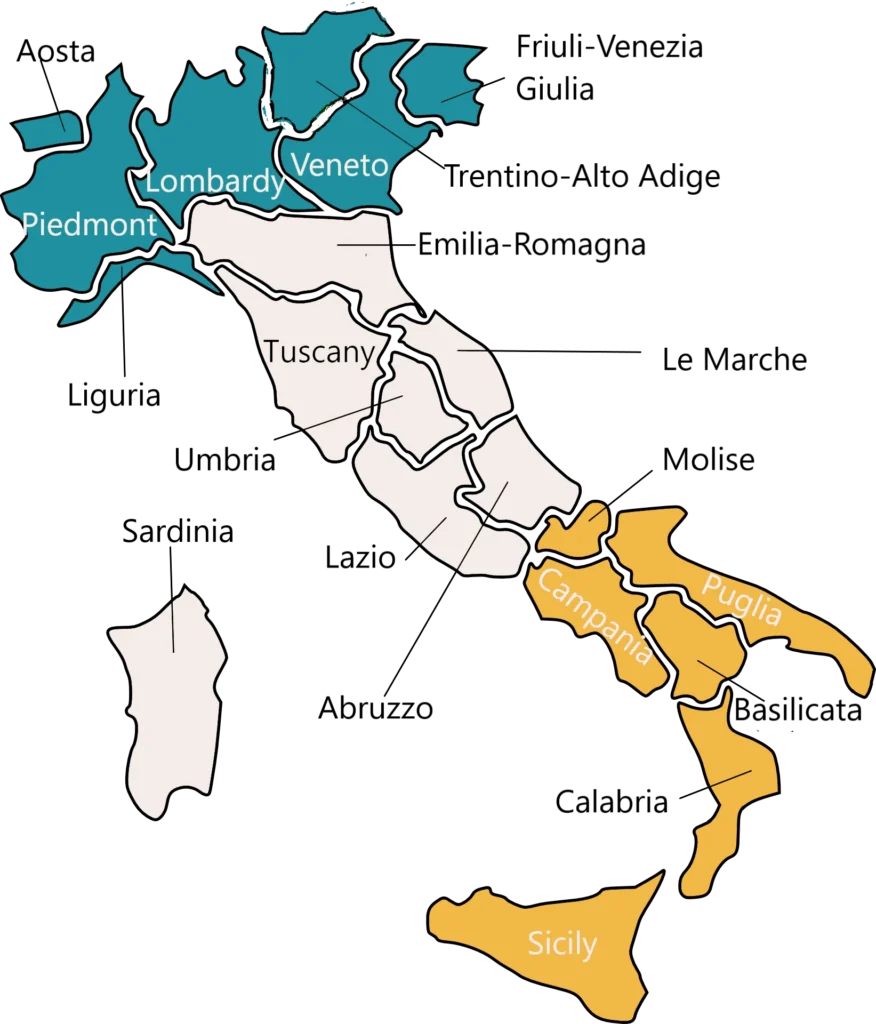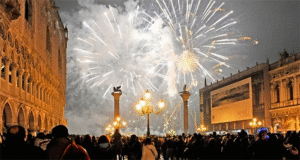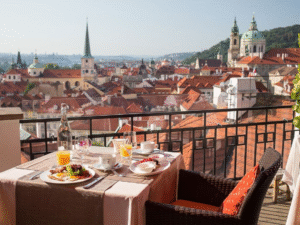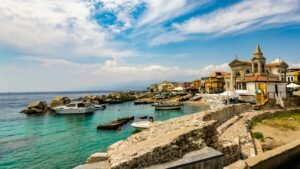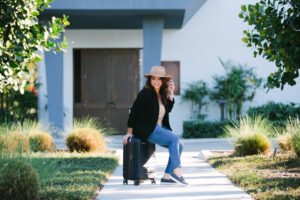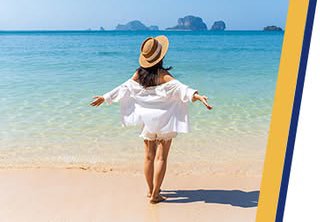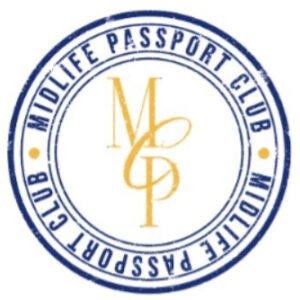Bologna sits at the heart of Emilia-Romagna, Italy’s food and wine powerhouse. The region produces Lambrusco (the fizzy red that’s nothing like the cheap stuff back home), Pignoletto (crisp, sparkling whites), and Sangiovese from the hills. But here’s the thing—Bologna itself isn’t a wine town like Tuscany’s Montalcino or Piedmont’s Barolo. The vineyards are in the surrounding hills and neighboring provinces. That means wine tours from Bologna involve short drives, beautiful countryside, and wineries that feel local and unpretentious.
Whether you want a half-day tasting in the Bologna hills, a full-day Emilia-Romagna wine tour hitting multiple producers, or a multi-day trip to Tuscany, this guide covers your options. Lets dig into Bologna wine tours.
This post contains affiliate links.
Why take a wine tour from Bologna?
Bologna is surrounded by wine regions, but they’re scattered. Having a guide (or rental car) unlocks access to small, family-run wineries that don’t advertise online or welcome drop-ins. You’ll taste wines that never leave Italy, learn about local grape varieties, and pair tastings with Emilian food—think Parmigiano-Reggiano, prosciutto, and balsamic vinegar.
What makes Emilia-Romagna wine tours different:
- Less touristy than Tuscany or Piedmont
- Focus on food and wine pairings (this is La Grassa—the Fat One)
- Smaller, family-run wineries with personal attention
- Lambrusco and Pignoletto dominate, not the usual Chianti or Barolo
- Often combined with food experiences (cheese dairies, balsamic producers, cured meat aging rooms)
Who should book a wine tour:
- Wine lovers who want to go deeper than restaurant wine lists
- Foodies curious about Emilia-Romagna’s terroir
- Travelers who don’t want to drive (DUI laws in Italy are strict)
- Anyone seeking a break from city sightseeing
Bologna hills wine tours (half-day)
The easiest option. Vineyards in the Bologna hills (Colli Bolognesi) sit 20–40 minutes from the city center. Half-day tours (4–5 hours) typically visit 1–2 wineries, include tastings of 3–5 wines, and pair them with local cheeses, cured meats, and bread.
What you’ll taste
Pignoletto: Bologna’s signature white. It comes still or sparkling (frizzante), with crisp acidity and notes of apple, pear, and almond. Think Prosecco’s less famous, more interesting cousin.
Barbera: A medium-bodied red with bright cherry flavors and good acidity. Food-friendly and approachable.
Cabernet Sauvignon & Merlot: International grapes grown in the Bologna hills. Solid but not groundbreaking.
Typical half-day itinerary
9:30 am: Pickup from your Bologna hotel
10:00 am: Arrive at first winery in the Colli Bolognesi. Tour the vineyards and cellar, then taste 3 wines with snacks (cheese, salumi, bread).
12:00 pm: Visit a second winery or stay longer at the first for a seated tasting with more food.
1:30 pm: Return to Bologna
Cost: €60–100 per person (includes transport, tastings, light food)
Best for: Travelers with limited time, anyone who wants a taste of local wine without a full-day commitment
Book through: [Affiliate link placeholder: “Book Bologna Hills Wine Tour”]
Emilia-Romagna wine tour (full-day)
This is the deep dive. Full-day tours (7–9 hours) cover more ground, visiting wineries in multiple provinces—often Modena (Lambrusco central) and the Bologna hills, sometimes venturing to Parma or Reggio Emilia.
What you’ll experience
Lambrusco tastings in Modena: Real Lambrusco—dry, fizzy, and food-friendly—bears no resemblance to sweet, mass-market versions. You’ll taste different styles (secco, amabile, dolce) and learn why Italians drink it with rich Emilian dishes.
Parmigiano-Reggiano dairy visit: Watch the cheese-making process, see the aging rooms (stacked floor-to-ceiling with 80-pound wheels), and taste Parmigiano at different ages (12, 24, 36+ months).
Traditional balsamic vinegar producer: Visit an acetaia (balsamic vinegar attic) in Modena or Reggio Emilia. Taste the real stuff—aged 12–25 years, syrupy, and complex—not the cheap supermarket version.
Multi-course lunch: Many tours include a sit-down lunch at a trattoria or winery. Expect tortellini, tagliatelle al ragù, grilled meats, and Lambrusco pairings. Check more Bologna Food tours.
Typical full-day itinerary
9:00 am: Pickup from Bologna
9:45 am: First winery in the Bologna hills (Pignoletto tasting)
11:30 am: Drive to Modena, visit Parmigiano-Reggiano dairy
1:00 pm: Lunch at a local trattoria or winery (pasta, meat, wine)
3:00 pm: Lambrusco winery tour and tasting
4:30 pm: Traditional balsamic vinegar producer (tasting)
6:00 pm: Return to Bologna
Cost: €120–180 per person (includes transport, tastings, lunch, all experiences)
Best for: Serious food and wine lovers, anyone wanting the full Emilia-Romagna experience
Book through:
Also check out Bologna in the Winter and Day Trips from Bologna
Lambrusco tasting tours (Modena focus)
Lambrusco deserves its own category. This fizzy red wine (yes, red and sparkling) is misunderstood outside Italy. The good stuff is dry, refreshing, and pairs perfectly with Emilian cuisine—fatty cured meats, fried foods, rich pasta sauces.
Where Lambrusco comes from
Modena and Reggio Emilia are Lambrusco heartland. The wine is made from several grape varieties (Lambrusco Grasparossa, Lambrusco di Sorbara, Lambrusco Salamino) that produce different styles—some light and floral, others dark and tannic.
What a Lambrusco tour includes
- Visit 1–2 Lambrusco producers in the Modena countryside
- Taste 3–5 styles (secco/dry, amabile/off-dry, dolce/sweet)
- Learn the traditional method of making Lambrusco (some use tank fermentation, others bottle fermentation)
- Pair tastings with local foods (mortadella, Parmigiano, tigelle flatbreads)
- Often combined with a balsamic vinegar or Parmigiano visit
Cost: €80–120 per person (half-day); €140–180 (full-day with food experiences)
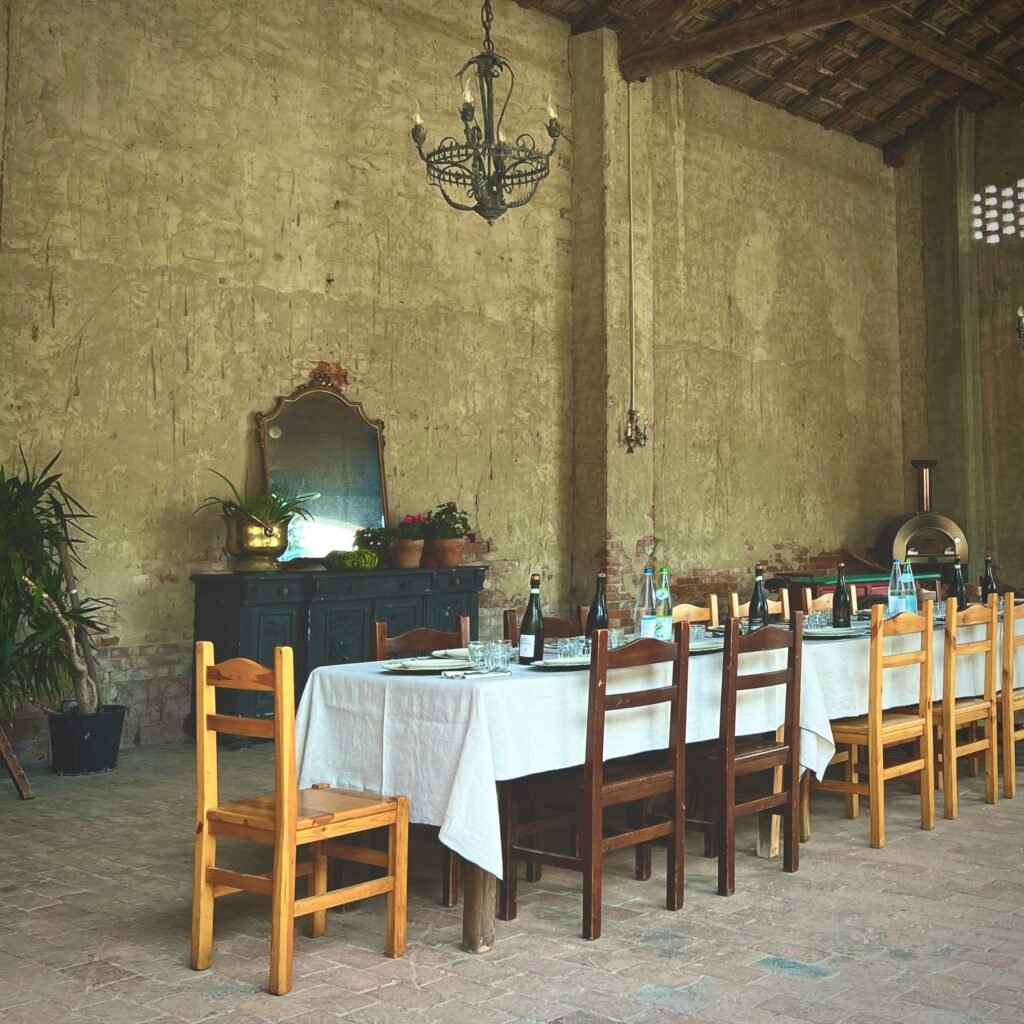
Best for: Wine geeks, anyone curious about misunderstood wines, Lambrusco skeptics who need convincing
Book through: Book Lambrusco Wine Tour from Bologna
Wine tasting in Bologna city center
Don’t want to leave the city? Bologna has excellent wine bars (enoteche) where you can taste regional wines without a tour.
Best wine bars in Bologna
Enoteca Italiana (Via Marsala): Massive selection of Italian wines, knowledgeable staff, and small plates. Order by the glass or do a guided tasting flight.
Osteria del Sole (Via Ranocchi): Bologna’s oldest osteria (opened 1465). BYOB food; they supply wine. Casual, local, and atmospheric.
Divino Bottega (Via Battibecco): Natural wine bar with small-producer bottles and thoughtful pairings. Hip crowd, good charcuterie boards.
Il Salotto del Vino (Via San Felice): Cozy enoteca with 200+ wine labels. The owner guides tastings and recommends pairings. Low-key and welcoming.
Drogheria della Rosa (Via Cartoleria): Wine bar and restaurant. Seasonal menu, excellent wine list, and intimate vibe. Reserve ahead.
How it works
Order 2–3 glasses (€5–10 each) and pair with taglieri (charcuterie boards). Staff will guide you through regional wines and explain pairings. Budget €20–40 per person for a solid tasting experience.
Best for: Budget travelers, anyone short on time, wine lovers who prefer curation over vineyards
Tuscany wine tour from Bologna (full-day or overnight)
Bologna sits 90 minutes from Tuscany’s Chianti region. If you want the classic Italian wine experience—rolling hills, cypress trees, Sangiovese—day trips and overnight tours are possible.
What you’ll experience
- Drive through Tuscan countryside (Val d’Orcia, Chianti Classico)
- Visit 2–3 wineries producing Chianti, Brunello di Montalcino, or Vino Nobile di Montepulciano
- Tuscan lunch with wine pairings
- Optional stops in hilltop towns (Montepulciano, Pienza, San Gimignano)
Day trip vs. overnight
Day trip (10–12 hours): Long but doable. You’ll spend 3 hours driving round-trip and 7–9 hours in Tuscany. Expect an early start (7–8 am pickup) and late return (7–8 pm).
Overnight tour (2 days/1 night): More relaxed. Stay in a Tuscan agriturismo (farmhouse inn), visit 4–5 wineries over two days, and enjoy leisurely meals. Includes accommodation and most meals.
Cost:
- Day trip: €150–220 per person
- Overnight: €400–600 per person (includes accommodation, meals, tastings)
Best for: Travelers with extra time, anyone who wants Tuscany without basing there, wine lovers seeking variety
Book through: [Affiliate link placeholder: “Book Tuscany Wine Tour from Bologna”]
Best wineries near Bologna (if you’re driving yourself)
Prefer to DIY? Here are wineries in the Bologna hills that welcome visitors (but call or email ahead—many require reservations).
Tenuta Bonzara (20 min from Bologna)
Small family winery producing Pignoletto, Barbera, and Cabernet Sauvignon. They offer guided tastings (€25–35 per person) paired with local cheeses and salumi. The views over the hills are gorgeous.
Book via Get Your Guide.
Cantina Floriano Cinti (30 min from Bologna)
Organic winery focusing on Pignoletto and lesser-known local grapes. Tastings include a vineyard walk and cellar tour. Family-run and welcoming.
Book via: Phone or email ahead. Check their website.

Villa di Corlo (25 min from Bologna)
Historic estate producing classic Colli Bolognesi wines. They offer tastings, tours, and sometimes cooking classes. The villa itself is beautiful—Renaissance architecture surrounded by vineyards.
Book via: Website or phone. Check reviews.
Vallona (Monteveglio area, 30 min)
Natural wine producer with minimal intervention winemaking. Their Pignoletto is excellent. Tastings are casual and hosted by the winemaker. Call ahead.
Book via: Phone (Italian helpful but not required)
Driving tips
- Rent a car in Bologna (agencies near the train station)
- Use GPS (Google Maps works well)
- Designate a non-drinking driver (Italy has strict DUI laws—0.05% BAC limit)
- Call wineries 1–2 days ahead to confirm visits
Cost: Tastings average €20–40 per person. Driving yourself is cheaper than tours but requires planning and a sober driver.
Andrea Taste of Bologna food & wine tour
Andrea Taste of Bologna is a popular walking food tour in Bologna’s Quadrilatero market district. While not a vineyard tour, it includes wine tastings alongside food experiences—perfect for combining city sightseeing with wine education.
What it includes
- 3-hour guided walk through Bologna’s historic food markets
- Stops at 6–8 food vendors (cheese, cured meats, pasta, gelato)
- Wine tastings (usually Pignoletto and Lambrusco) paired with food
- History and stories about Bolognese cuisine
Best for: Foodies, first-time visitors, anyone wanting wine in a food-focused context
Book through: Book Andrea Taste of Bologna Food & Wine Tour
Private wine tours vs. group tours
Group tours
Pros:
- Cheaper (€60–180 per person)
- Social—meet other travelers
- Fixed itineraries (easy planning)
Cons:
- Less flexibility (set schedule, can’t linger)
- Larger groups (8–15 people)
- May visit more touristy wineries
Best for: Budget travelers, solo visitors, anyone comfortable with structured experiences
Private tours
Pros:
- Fully customizable (pick wineries, pace, focus)
- Smaller group (just your party)
- More personal attention from guides and winemakers
- Can combine wine with specific interests (balsamic, Parmigiano, truffle hunting)
Cons:
- More expensive (€300–500+ for a group, depending on size and duration)
- Requires more advance planning
Best for: Couples, families, serious wine lovers, anyone celebrating something special
Book through: [Affiliate link placeholder: “Book Private Bologna Wine Tour”]
What to expect on a Bologna wine tour
Dress code
Casual and comfortable. Vineyards can be muddy (especially after rain), so wear closed-toe shoes with grip. Layers help—cellars are cool even in summer.
How much wine will you drink?
Most tours include 6–12 tastings (pours of 1–2 oz each) spread over several hours. You’ll also eat, which slows absorption. It’s enough to feel relaxed but not drunk.
Tipping
Not required in Italy, but rounding up or leaving €5–10 for excellent service is appreciated.
Language
Most tours operate in English. Family wineries may have Italian-only guides, but tour companies provide translators.
Booking timing
Book 1–2 weeks ahead for group tours. Private tours and high-season dates (April–October) need 3–4 weeks’ notice.
Best time of year for Bologna wine tours
Spring (April–May): Vineyards are green, weather is mild, and winemakers are active. Perfect.
Fall (September–October): Harvest season. You might see grape picking, crush, and early fermentation. The countryside glows golden.
Summer (June–August): Hot but doable. Morning tours are more comfortable. Some wineries close in August for vacation.
Winter (November–March): Quiet season. Fewer tourists, more personal attention, but vineyards look bare. Great for serious tastings without crowds.
Verdict: April–May or September–October for the best combination of weather, scenery, and winery activity.
Final tips for Bologna wine tours
Don’t skip the food. Emilia-Romagna wine tours shine because of the food-wine synergy. Pignoletto with Parmigiano, Lambrusco with mortadella—these pairings define the region.
Ask questions. Small wineries love talking about their process, philosophy, and family history. Be curious.
Buy bottles. Many wines you’ll taste don’t export. If you love something, buy it and ship it home (wineries can arrange this).
Stay flexible. Italian winemakers run on a relaxed schedule. Tours might start late, linger longer, or add spontaneous stops. Roll with it.
Combine with other experiences. The best tours mix wine with Parmigiano, balsamic, or truffle experiences. Wine alone is great; wine + context is better.
Bologna’s wine scene is underrated, local, and delicious. The tours take you beyond the city’s medieval towers and into the hills where Emilia-Romagna’s food culture begins—in the soil, the vines, and the small producers who’ve been doing this for generations.
Book a tour, drink some Lambrusco, and eat more cheese than you thought possible. That’s the Bologna wine experience.
Salute!

